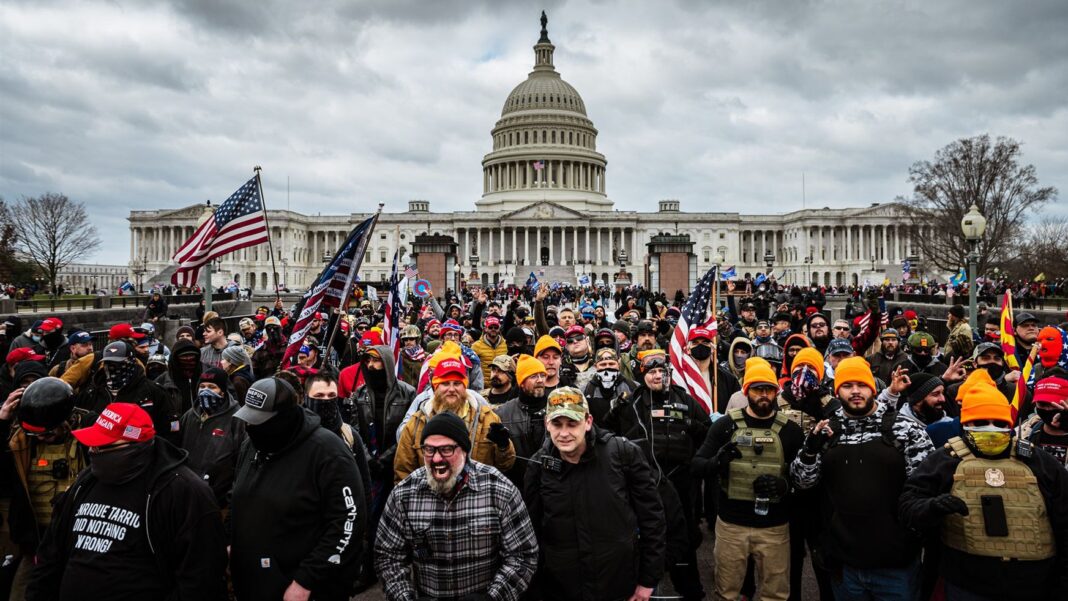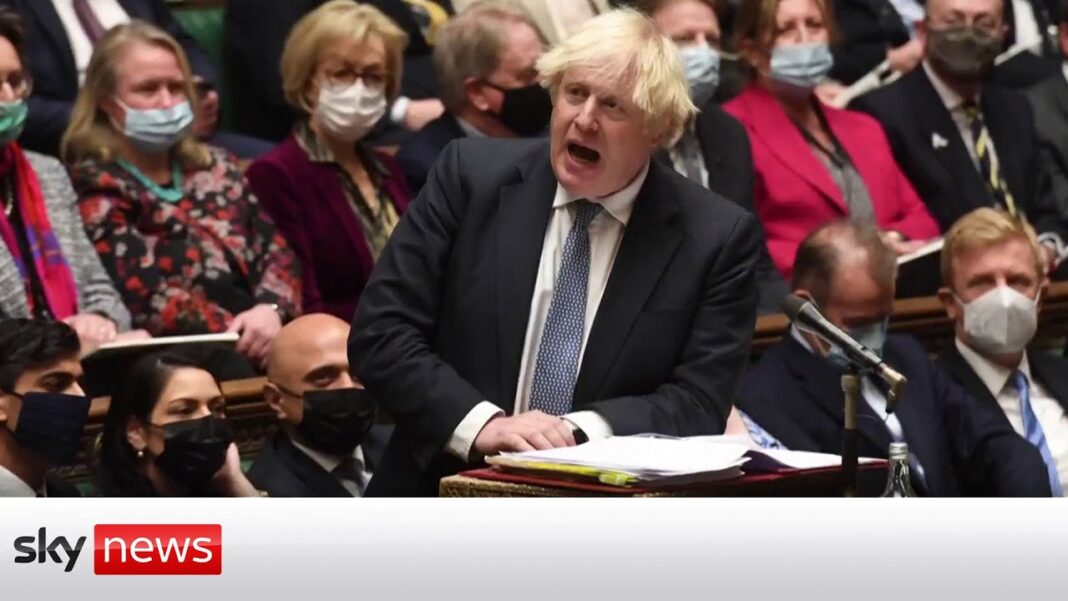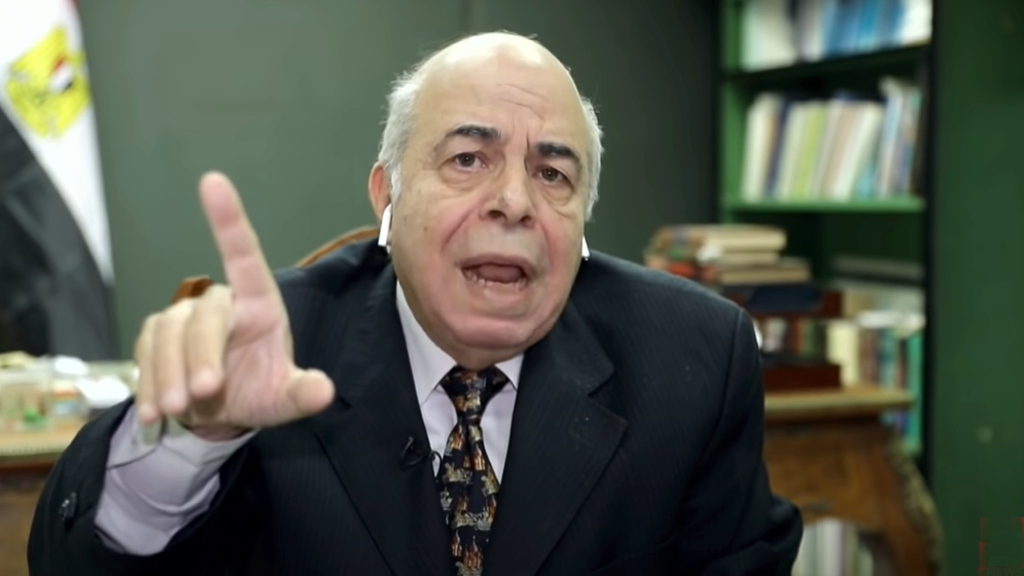
Above Video: Trump Supporters?
Some United States Capitol Police (USCP) officers were teleworking, some riot gear was locked in a bus or shattered upon impact after being improperly stored, and only a couple hundred of the 1,879 sworn officers were inside the Capitol Building, despite intelligence showing the protests might get heated on January 6th, 2021.
Even with a $464 million-a-year budget and nearly 2,000 officers, the USCP was unable to stop a breach of the Capitol by protestors who carried no guns. The USCP’s budget is greater than many large metropolitan cities, including Detroit, Minneapolis, St. Louis, and Columbus, Ohio.
Today, Congress plans to give the USCP — which has admitted to a lack of preparation, training, communication, and equipment—an additional ~$150 million, bringing its budget to over $600 million for fiscal year 2022.
Some of that money will no doubt go to the USCP’s diversity office, which was little use on January 6th but has nonetheless grown in staff and budget since 2016.
Showing Up Is Half the Battle
Despite employing 1,879 sworn officers as of September 2020, a congressional inquiry forced USCP to admit that on January 6th, only 195 officers were deployed to interior or exterior posts at the U.S. Capitol and 276 more were assigned to the Department’s seven civil disturbance unit platoons.
USCP documents show that at 2pm on that day, only 1,214 officers were “on site” across the Capitol complex of buildings. Congressional investigators concluded, however, that USCP could only account for 417 officers and could not account for the whereabouts of the remaining 797 officers.
Only 1,457 of its 1,879 sworn officers were ever “on site” over the entire 24-hour period of January 6th. That leaves 422 officers who were never even on site – 23-percent or nearly 1 in every 4 officers.
Some officers didn’t show up because they were “teleworking.” The USCP Inspector told Congress that 43 sworn officers were “at alternative facility/travel” and “teleworking.” (See footnote 358.)
Responding to our request for comment the Capitol Police spokesperson provided this context:
“The Department has off-site locations, which also must continue to operate. Fewer than 50 sworn employees were working off-site on January 6. Many of the sworn employees who did not work on January 6 were unavailable due to injuries, COVID-19, or leave such as Family Medical Leave or Military Leave. While the Department restricted leave for this event, it did not cancel leave for sworn employees who had submitted leave requests that were approved months in advance of January 6.”
The U.S. Capitol Complex consists of approximately 20 buildings spread across roughly two square miles, including House of Representatives and Senate office buildings, the Library of Congress, and the U.S. Supreme Court, as well as various parks and the U.S. Botanic Garden.
USCP, in 2018, screened 11.2 million individuals at building entrances and interior checkpoints, according to USCP Congressional testimony.
As the sole federal law enforcement agency with jurisdiction over the Capitol Complex, the USCP is the first and last line of defense protecting Members of Congress, their staff, and visitors to the nation’s Capitol buildings.
Riot Shields Shattered on Impact, Some Locked in a Bus, Officers Not Dressed for Success
According to a bipartisan, bicameral Congressional report, the USCP did not authorize its special tactical unit officers to wear protective gear at the beginning of their shift, but “pre-stage[d]” it in various locations.
In at least once instance, “USCP protective shields were locked in a bus during the riot so that a CDU platoon was unable to access them, and as a result, the platoon was required to respond to the crowd without the protection of their riot shields.”
But even those officers who had riot shields faced problems. USCP officers reportedly “were given defective riot shields that had been improperly stored and, as a result, “shatter[ed] upon impact.”
Inclusion, Diversity, Equity and Action (IDEA) Office of Little Use on January 6
Our auditors at OpenTheBooks.com reviewed what little is available on Capitol Police spending, and uncovered the previously unreported USCP “Inclusion, Diversity, Equity and Action (IDEA) Office.”
In 2016, the USCP hired Natalie Holder to be its “Chief Diversity Officer” and lead the USCP’s IDEA Office, an office she said she founded. Her salary is not public, though she bragged on her publicly accessible LinkedIn page that she grew the office to five people and “grew the budget by 70%[.]”
Interestingly, Holder was public about her anti-Trump biases. On Twitter and Instagram, Holder admitted to showing up for work late to walk an extra eight minutes for a Starbucks not sold at the Trump International Hotel. “#LateToWorkButOnTheRightSideOfHistory” she posted, alongside a photo of the hotel.
A little over five months before the security breach at the U.S. Capitol, the USCP Chief Steven Sund testified to Congress about the department’s diversity training:
“We have also strengthened our relationships with Asian-American, African American, Latinx, LGBTQIA, and women-focused professional associations in law enforcement through our involvement in conferences, meetings, and recruiting events.”
Weeks before he would resign following the massive breach in Capitol Hill security, Chief Sund released his Human Capital Strategic Plan for the USCP employees for 2021-2025, which listed the second highest goal for USCP employees as “diversity,” “inclusion,” and “equity.”
“Anybody have a plan?” USCP leadership was AWOL on January 6th
Congressional investigators reported:
Despite incident commanders being overwhelmed, USCP leadership never took control of the radio to communicate with responding officers. Officers did not recall hearing [Chief] Mr. Sund on the radio at any point during the attack and only recalled hearing Ms. Pittman once—when she ordered a lockdown of the Capitol Building at 2:00 p.m.
…Neither Mr. Sund nor Ms. Pittman provided an explanation for why USCP leadership did not directly communicate with officers. One officer attributed this failure to a lack of operational experience among USCP leadership and suggested that the promotion process at USCP should be reevaluated. In the absence of communication, officers lacked clarity about whether to respond to calls for “all available units.” An officer reported hearing a Lieutenant repeatedly ask over the radio, “[d]oes anybody have a plan?”






